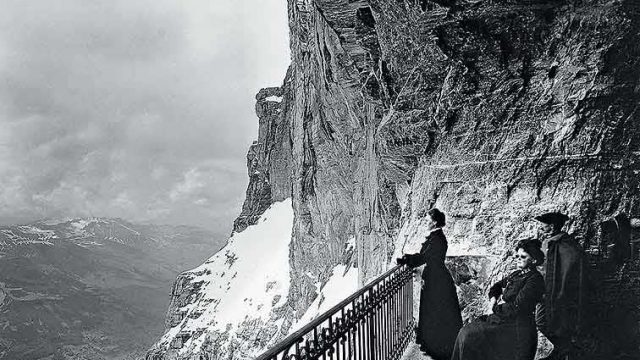On August 1 this year, forty-eight flares burned for five minutes on the north walls of the Eiger and Mönch mountains in the Swiss Alps to show the route of the historic Jungfraubahn mountain railway that has been open for exactly a hundred years. A century on, its claim to transport passengers to the highest railway station in Europe (at 3,454m) remains uncontested.
It was in 1894 that industrialist Adolf Guyer-Zeller received a concession for a metre gauge rack-and-pinion railway from the ski resort of Kleine Scheidegg to the summit of the Jungfrau, most of the nine-kilometre route running through a tunnel cut into the Eiger and Mönch mountains. Construction began two years later and the railway was completed in sections. There are three stations on the way—the Eigergletscher and, within the tunnel, the Eigerwand and the Eismeer stations, where passengers disembark to take in spectacular views of the surrounding vistas through windows cut into the mountain faces.
This photograph of the Eigerwand (Eiger Wall) station, which lies at a height of 2,865m and opened in 1903, shows a group of tourists nonchalantly taking in the view. There’s a toughened glass window instead of a railing now but even the posters of Deepika Padukone endorsing Tissot timepieces cannot keep the cold out.
It was only in 1912 though that the Italian construction crew set off a huge charge of dynamite and finally managed to break through to the Jungfraujoch. Today, some 750,000 people visit Europe’s highest-altitude railway station annually.




